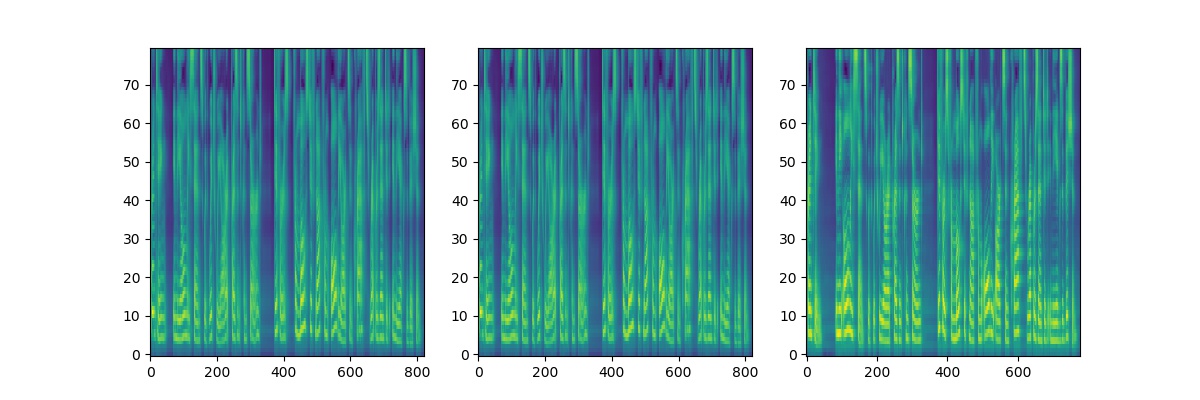The Implementation of FastSpeech Based on Pytorch.
- Fix bugs in alignment;
- Fix bugs in transformer;
- Fix bugs in LengthRegulator;
- Change the way to process audio;
- Use waveglow to synthesize.
- python 3.6
- CUDA 10.0
- pytorch 1.1.0
- numpy 1.16.2
- scipy 1.2.1
- librosa 0.6.3
- inflect 2.1.0
- matplotlib 2.2.2
- Download and extract LJSpeech dataset.
- Put LJSpeech dataset in
data. - Put Nvidia pretrained Tacotron2 model in the
Tacotron2/pretrained_model; - Put Nvidia pretrained waveglow model in the
waveglow/pretrained_model; - Run
python preprocess.py.
Run python train.py.
Run python synthesis.py.
- Baidu: Step:112000 Enter Code: xpk7
- OneDrive: Step:112000
- In the paper of FastSpeech, authors use pre-trained Transformer-TTS to provide the target of alignment. I didn't have a well-trained Transformer-TTS model so I use Tacotron2 instead.
- The examples of audio are in
results. - The outputs and alignment of Tacotron2 are shown as follows (The sentence for synthesizing is "I want to go to CMU to do research on deep learning."):
- The outputs of FastSpeech and Tacotron2 (Right one is tacotron2) are shown as follows (The sentence for synthesizing is "Printing, in the only sense with which we are at present concerned, differs from most if not from all the arts and crafts represented in the Exhibition."):


